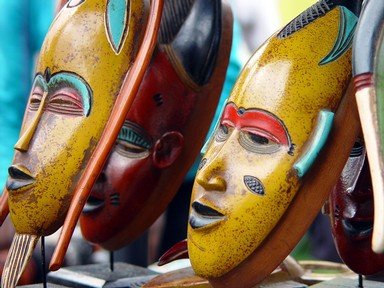
Cultures of Namibia: North or South? Quiz
First colonized by Germany and then ruled by South Africa. Namibia is an independent country in southern Africa with diverse ethnic groups and cultures. This quiz asks you to classify some of them per their geographic location within Namibia. Good luck!
A classification quiz
by Lpez.
Estimated time: 4 mins.
- Home
- »
- Quizzes
- »
- World Trivia
- »
- Cultures
- »
- African Cultures